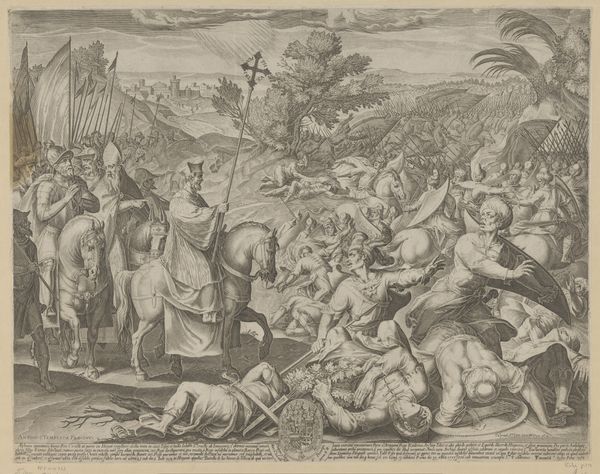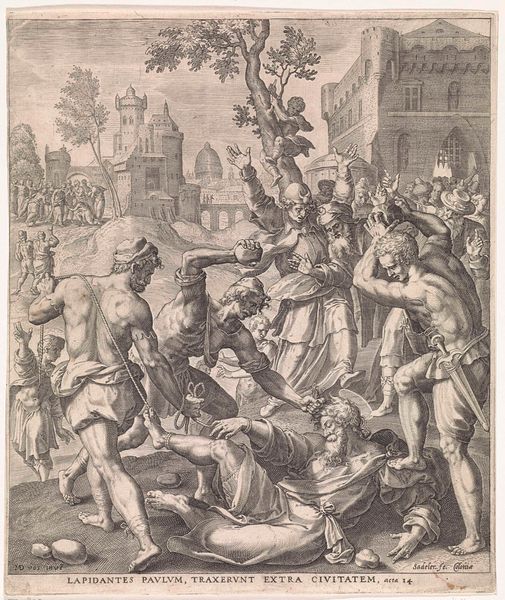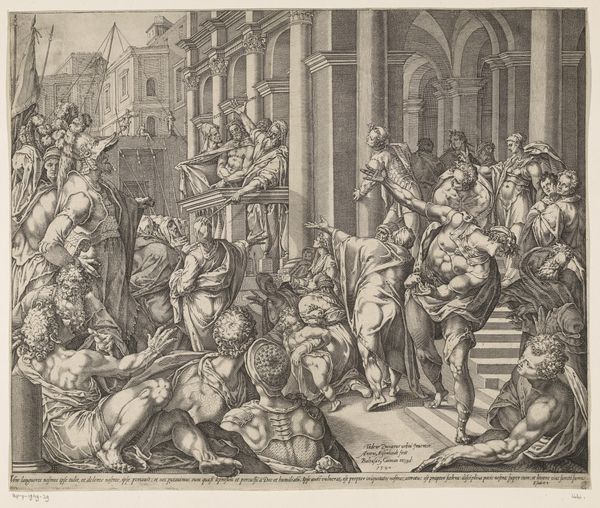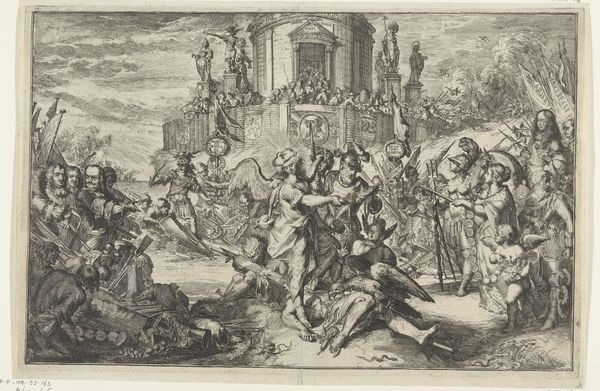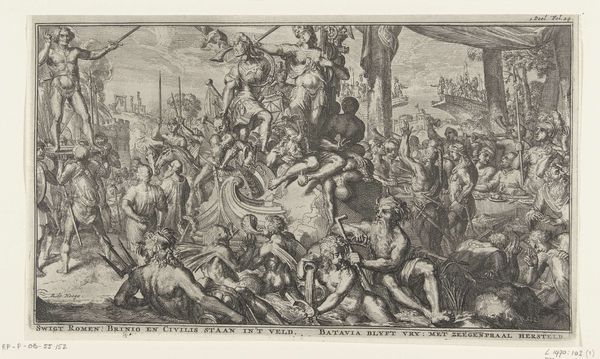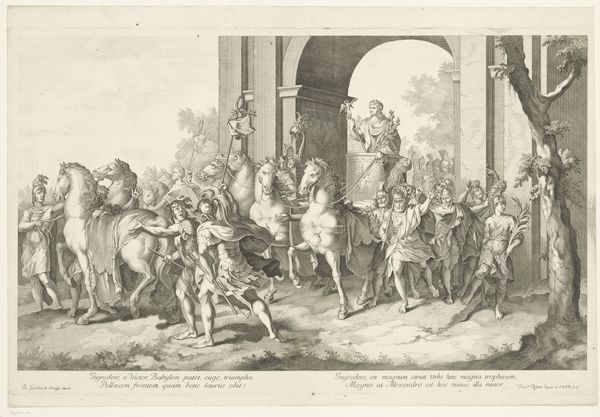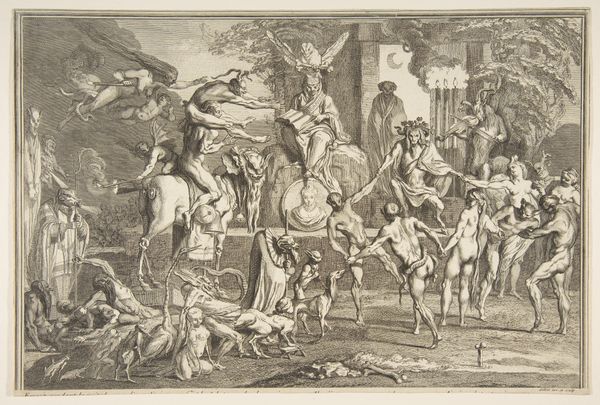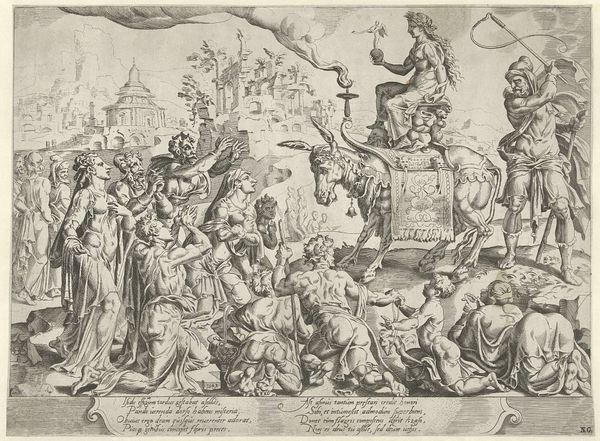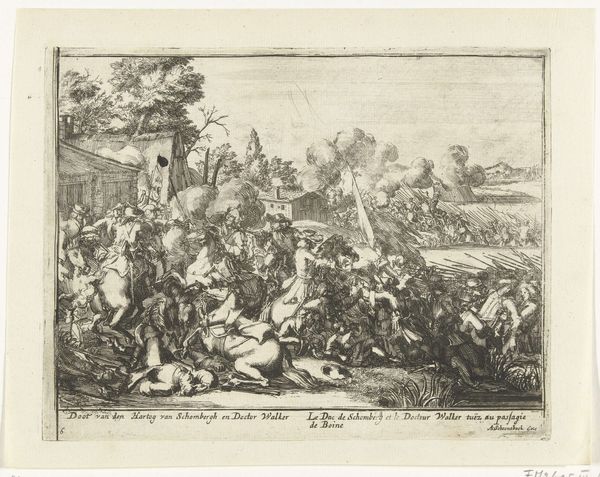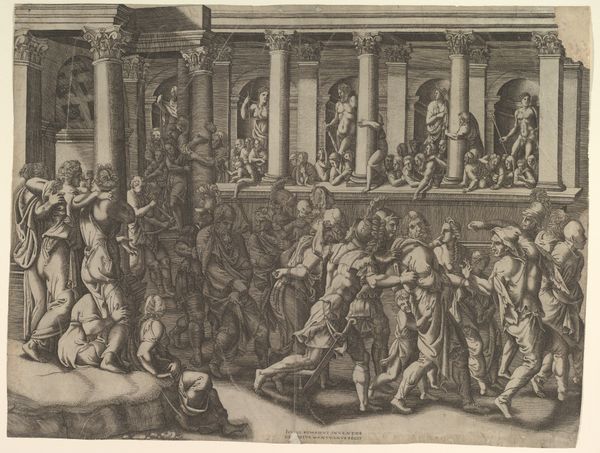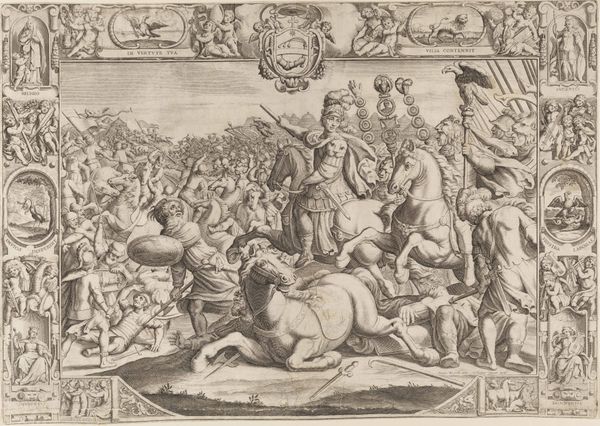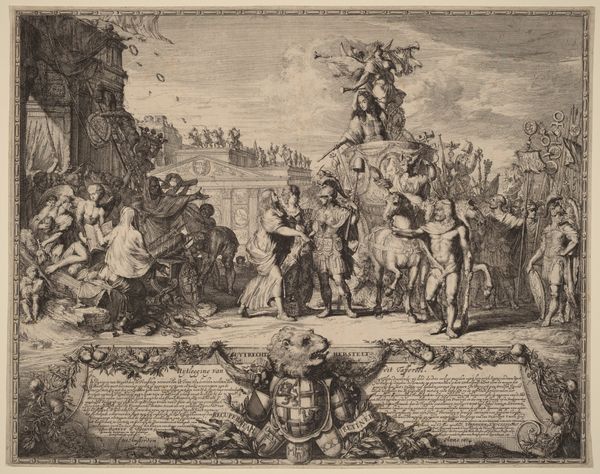
etching, engraving
#
narrative-art
#
baroque
#
etching
#
old engraving style
#
history-painting
#
engraving
Dimensions: height 156 mm, width 197 mm
Copyright: Rijks Museum: Open Domain
Curator: The grotesque display in this etching titled, *De verminkte lijken van de gebroeders De Witt op het schavot, 1672*, is quite disturbing. Editor: Yes, the disfigured bodies of the De Witt brothers are shocking! The brutality is almost palpable. Given its date, I assume this horrific image captures a real historical event, but how should we interpret its message today? Curator: Precisely. We need to confront this artwork through the lens of power, propaganda, and collective violence. In 1672, the De Witt brothers, who represented a more republican faction in Dutch politics, were brutally murdered by a pro-monarchist mob. The etching isn’t a neutral document. Editor: So, you're saying that instead of simply documenting the event, the artist likely had a specific political agenda? Curator: Absolutely. Think about the figures surrounding the corpses: some are celebrating, while others seem indifferent. How might that representation impact public perception of the events, shaping a specific narrative about political dissent and its consequences? How does it portray the power dynamics at play within Dutch society at that moment? Editor: That's a good point; the image is staged to provoke a response. It almost seems to justify the violence by depicting it as a popular uprising. Are we meant to feel complicit? Curator: Perhaps. Or maybe warned. Consider how images of violence and political upheaval continue to be used today to shape opinions and control populations. The legacy of visual manipulation persists. What do you think is most important to highlight for our listeners? Editor: I think underscoring that this is more than a historical record is critical. It's a reminder of the enduring power of images to manipulate and normalize political violence. It's a warning from the past, very relevant today. Curator: I agree. Recognizing how historical narratives intertwine with contemporary issues allows us to critically engage with our present reality.
Comments
No comments
Be the first to comment and join the conversation on the ultimate creative platform.
